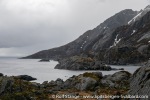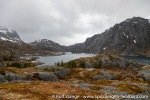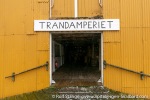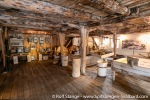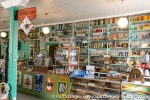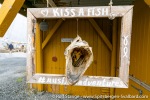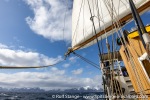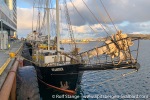-
current
recommendations- Liefdefjord
New page dedicated to one of Spitsbergen's most beautiful fjords. Background information and many photos.
- New Spitsbergen guidebook
The new edition of my Spitsbergen guidebook is out and available now!
- Liefdefjord
New page dedicated to one of Spitsbergen's most beautiful fjords. Background information and many photos.
Page Structure
-
Spitsbergen-News
- Select Month
- May 2025
- April 2025
- March 2025
- February 2025
- January 2025
- December 2024
- November 2024
- October 2024
- September 2024
- August 2024
- July 2024
- June 2024
- May 2024
- April 2024
- March 2024
- February 2024
- January 2024
- December 2023
- November 2023
- October 2023
- September 2023
- August 2023
- July 2023
- June 2023
- May 2023
- April 2023
- March 2023
- February 2023
- January 2023
- December 2022
- November 2022
- October 2022
- September 2022
- August 2022
- July 2022
- June 2022
- May 2022
- April 2022
- March 2022
- February 2022
- January 2022
- December 2021
- November 2021
- October 2021
- September 2021
- August 2021
- July 2021
- June 2021
- May 2021
- April 2021
- March 2021
- February 2021
- January 2021
- December 2020
- November 2020
- October 2020
- September 2020
- August 2020
- July 2020
- June 2020
- May 2020
- April 2020
- March 2020
- February 2020
- January 2020
- December 2019
- November 2019
- October 2019
- September 2019
- August 2019
- July 2019
- June 2019
- May 2019
- April 2019
- March 2019
- February 2019
- January 2019
- December 2018
- November 2018
- October 2018
- September 2018
- August 2018
- July 2018
- June 2018
- May 2018
- April 2018
- March 2018
- February 2018
- January 2018
- December 2017
- November 2017
- October 2017
- September 2017
- August 2017
- July 2017
- June 2017
- May 2017
- April 2017
- March 2017
- February 2017
- January 2017
- December 2016
- November 2016
- October 2016
- September 2016
- August 2016
- July 2016
- June 2016
- May 2016
- April 2016
- March 2016
- February 2016
- January 2016
- December 2015
- November 2015
- October 2015
- September 2015
- August 2015
- July 2015
- June 2015
- May 2015
- April 2015
- March 2015
- February 2015
- January 2015
- December 2014
- November 2014
- October 2014
- September 2014
- August 2014
- July 2014
- June 2014
- May 2014
- April 2014
- March 2014
- February 2014
- January 2014
- December 2013
- November 2013
- October 2013
- September 2013
- August 2013
- July 2013
- June 2013
- May 2013
- April 2013
- March 2013
- February 2013
- January 2013
- December 2012
- November 2012
- October 2012
- September 2012
- August 2012
- July 2012
- June 2012
- May 2012
- April 2012
- March 2012
- February 2012
- January 2012
- December 2011
- November 2011
- October 2011
- September 2011
- August 2011
- May 2011
- April 2011
- March 2011
- February 2011
- January 2011
- December 2010
- November 2010
- September 2010
- August 2010
- July 2010
- June 2010
- May 2010
- April 2010
- March 2010
- February 2010
- November 2009
- October 2009
- August 2009
- July 2009
- June 2009
- May 2009
- April 2009
- March 2009
- February 2009
- January 2009
- December 2008
- November 2008
- October 2008
- August 2008
- July 2008
- June 2008
- May 2008
- April 2008
- March 2008
- February 2008
- April 2000
- Select Month
-
weather information
-
Newsletter

| Guidebook: Spitsbergen-Svalbard |
Home → May, 2023
Monthly Archives: May 2023 − News & Stories
New placenames: Negerpynten becomes Svarthuken
Three placenames in the southeast of Edgeøya were changed recently by the Placenames commission of the Norwegian Polar Institute. Negerpynten, Negerfjellet and Negerdalen have raised more than one eyebrow in recent years – more than 400 years after they first appeared in 1616 on English maps, according to the standard source “The Placenames of Svalbard”. The original names probably referred to the dark appearance of the landscape, which is connected to the geology (Triassic sediments).

Cape and mountain were until recently known as Negerpynten and Negerfjellet.
With Svarthuken and Svarthukfjellet, they have now officially got considerably more agreeable designations.
After growing controversies in recent years, the names were now officially changed to Svarthuken, Svarthukfjellet and Svarthukdalen.

The old names on the official map (Toposvalbard). © Norwegian Polar Institute.
Isbjørn II aground in Borebukta
The small passenger vessel Isbjørn II ran aground on Monday in Borebukta. After a while, the Captain decided to make a Mayday call and 11 passengers and 4 crew members were evacuated by helicopter. Nobody was injured, all persons are well.

Isbørn II (archive image, 2018).
The ship itself was towed to Longyearbyen on Tuesday. The vessel appears to be undamaged. A small amount of diesel (or a similar liquid) was initially observed on the water near the grounding site, but according to the Sysselmester, it was only a small volume that escaped into the environment without doing any harm. How exactly this could happen is unclear, it may have happened in connection to the strong listing of the grounded ship during low tide.

The relevant area in Borebukta. The exact position of the grounding was not published.
Screenshot of an electronic chart, processed.
The case is remarkable for several reasons. First of all, it is not to happen at all in the first place. Secondly, it is not the first time that Isbjørn II ran aground in this very position – the same thing had actually happened before in the very same place. And then, there are contradictory statements regarding the exact position of the grounding. The area appears to be well charted on modern sea charts. Some say, however, that the grounding happened in a position where the chart indicates a depth of 11 metres (right part of the oval), a depth that – if correct – would be safe for small vessels such as as Isbjørn II. Should this be correct, then the chart, although seemingly detailed and compiled according to modern standards, would be dangerously faulty. But given current public information, it can not be excluded either that Isbørn II ran aground in shallow waters near the small island (left part of the oval). In this case, navigation errors would likely have played an important role in the current incident.
Next to Isbjørn II, there are several other boats that have kissed the bottom in this area since 2015 (and, possibly, before). In at least one case, one involved person said to have informed the Norwegian coastal authority, which is responsible for the charts, about faulty depth information.
Without detailed knowledge about the exact position of the grounding, it is impossible to judge what really happend and if the chart quality actually was a factor or not.
Black labour in Longyearbyen
Employment relations in the grey or even black zone do also exist in Longyearbyen. Recently, the regional employment protection agency made controls in Longyearbyen and, in a number of cases, found evidence for black labour. Employees concerned are mainly of non-Norwegian origin, and often employed in house cleaning. Employees were found to have worked more hours than they were (officially) getting paid for, and wages were often well below usual levels. According to Svalbardposten, 50 kroner (currently approximately 4.25 Euro9 were paid per hour, while Norwegian standard wages would be at least 205 kroner (17.42 Euro).
The employment protection agency can only rise attention and bring cases to the attention of relevant authorities, such as the tax authority. Another difficulty is that some relevant Norwegian legislation is not in force in Svalbard. Due to the Spitsbergen Treaty system, not all Norwegian laws are automatically in force in Svalbard, but they have to be brought into force explicitly by Norwegian legislators.
There are, of course, house cleaning businesses in Longyearbyen that take care well of their employees and respect both legislation and reasonable ethical standards. Some of these companies are now raising criticism against their grey-zone competitors and against the lack of enthusiasm on behalf of the Norwegian government. Gustav Halsvik, director of ISS, is quoted saying that he thinks of the lack of action of Norwegian authorities as public racism, considering that Norwegian employees are hardly concerned.

Black labourn exists in Longyearbyen not only within house cleaning, but for example also in the catering trade. The cook of this delicious meal was most likely not getting paid according to standard wages!
Similar problems are known to exist in Longyearbyen also in industries such as transportation, building and restaurants.
Longyearbyen’s population is growing and becoming more Norwegian
Statistics Norway (statistisk sentralbyrå, SSB) have published new data describing Svalbard’s population. As of January 01, 2023, a total resident population of 2,897 people was registered in Spitsbergen’s five settlement, starting with 10 folks in the Polish research station in Hornsund.
Most people live in Longyearbyen and Ny-Ålesund, which are counted together in the official statistics. These settlements had a total population of 2,530 as of the beginning of 2023. During the fall of 2022, this number had increased: 234 people who had moved away were move than compensated by 352 who moved to Longyearbyen (and Ny-Ålesund, but most of them will definitely have moved to Longyearbyen).
These figures indicate high fluctuation: nearly 10 per cent of the total population have moved in and out in just half a year. High fluctuation has always been a characteristic of Longyearbyen’s population. Many come on contract and leave again as soon as the work is done, for example when a building project is finished or when the season is over.

Longyearbyen’s population in early 2023:
some went away, more moved in.
The statistics give away some more interesting details: the percentage of women has increased slightly up to 47.1 %. Also the percentage of Norwegian citizens has increased a little bit, but over the years it has been stable and close to 65 %. Amongst the non-Norwegian citizens, the proportion of people from EU-countries outside Scandinavia has grown a little bit.
At the same time, the percentage of children and young people has decreased. Especially when considering young children (younger than school age), the decrease is quite pronounced, from 170 in 2013 to only 109 in 2023. During the same period, the age group 20-44 has seen the strongest increase, from 49 % to 54 %.
Barentsburg and Pyramiden
Also the Russian settlements of Barentsburg and Pyramiden are covered by the Norwegian statistics. Also here, both are counted together, but there is not really a permanent population in Pyramiden, where only a small group of a few dozen people are present for periods of usually a couple of months or so to keep the place running.
Statistics show a record population also in Barentsburg and Pyramiden, but with 357 people in January 2023, it is a negative one – never have fewer people been registered in Spitsbergen’s Russian settlements. According to former head of Trust Arktikugol’s tourism section in Barentsburg Timofey Rogozhin as quoted by The Barents Observer, most Ukrainians have left since the beginning of the Russian war. Until early 2022, a high percentage of coal miners and others in Barentsburg were from the Ukraine.
Victory day celebrated in Barentsburg with large military-style parade
Victory day celebrations to commemorate the Soviet Union’s victory over Nazi Germany were held not only in Russia, but also in Barentsburg. Such celebrations have traditionally been held there also in previous years, but they used to be of a civilian and cultural character.
This time, things went a different way. A large parade was held with all available and suitable vehicles – cars, snow mobiles and even a helicopter. Large flags and other Russian symbols, including ones of military character, were shown in large numbers. This is in strong contrast to previous years.

Victory day (2023) in Barentsburg: more of a military-style propaganda event
(photo: Trust Arktikugol social media).
A few weeks ago, the Norwegian news platform NRK revealed connections of the general consul in Barentsburg to the Russian military secret service GRU.
Several large companies in Longyearbyen including Hurtigruten Svalbard and Visit Svalbard have encouraged their employees not to visit Barentsburg, referring to private visits. Using local wifi is discouraged in Barentsburg because of data safety considerations, and care is advised when using mobile phone network. Both Norwegian and Russian mobile network are available in and around Barentsburg, but mobile phones may automatically connect to Russian network when Norwegian coverage is unavailable, according to Svalbardposten.
Nusfjord and the last miles to Bodø
Fri
5 May
2023
A great final day of a great voyage, regardless of the weather, which was as it often is in these latitudes: grey and windy, with occasional rain- and snow showers. We spent the morning in Nusfjord, one of the most famous little old villages in Lofoten. For good reason. It is a beautiful place.
In the afternoon, we got the one thing that we had been missing so far on this trip: real sailing. The main engine was off for the complete open water crossing from Lofoten to the mainland coast. We made 7-8 knots under sail (and, mostly, sun). Beautiful! So we reached Bodø easily on Tuesday evening, and everybody went his or her way on Wednesday.
It had been great, it had been fun! And I thank everybody who was involved. Safe journey, home or elsewhere! And for Mario and his good people on SV Meander, safe sailing and fair winds en route up to Spitsbergen! See you again soon 🙂
- gallery anchor link: #gallery_2682
Click on thumbnail to open an enlarged version of the specific photo.
News-Listing live generated at 2025/May/02 at 15:37:02 Uhr (GMT+1)
